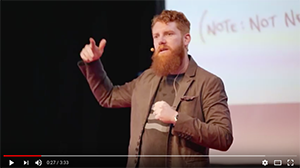
President’s Message
Change…
We only grow when we challenge ourselves and our thinking by looking at new and innovative ways of doing things. Albert Einstein described insanity as “doing the same thing over and over again and expecting different results.” The same principle applies to the way we look at our work and how we continually motivate ourselves to deliver our best each day. Traditional thinking around motivation centres around a payment based system, but new research is suggesting that purpose is a far greater motivator than just monetary compensation.
Thought leader, Jason Fox, focuses on shifting the conversation about motivation from payment to purpose in today’s creative and collaborative work environments and how we can incorporate the principles of gaming and game design into developing useful motivational frameworks.

Most people are intrinsically motivated to do good work, it’s the job of school leaders to foster this motivation and help ensure staff, or volunteers can see the results of their efforts. A clear sense of progress can be one of the biggest motivational tools management can use to keep staff motivated and moving forward.
Seeing and feeling progress is also a great motivator outside of work.
In my mid-forties, I found myself more unfit than I was comfortable. I was slightly overweight and decided that I needed to start taking positive steps to get back to a healthier place, both mentally and physically. As I began to see the results slowly start to show, I knew that I was on my way towards my goal of becoming a happier, healthier person.
A few years later I decided that if I was going to maintain the exercise regimen, there needed to be a link to something that I enjoyed for extra motivation. I set benchmarks to track my progress and celebrated each milestone, but it wasn’t always easy. When I first started getting serious about mountain biking, I lacked technical skill and discovered that glute strength and proper activation were something that I needed to focus on during my training. As my fitness and skill progressed, I could push boundaries a little more, and learn from the challenges and setbacks along the way.
Last year, I travelled to the United States and enjoyed five days of riding through Moab, Utah. Riders come to Moab from around the world for its scenic vistas and a vast assortment of trials suited to riders of all levels. I committed to some more challenging rides to keep me focused during the lead up to the trip. One of my favourite rides was the famous Porcupine Rim Trail – a 25km rapidly descending trail requiring reasonably advanced technical skills. It wasn’t a perfectly executed ride, but it was very satisfying to complete it.
Change starts with an idea – and ideas need to be nurtured and given a chance to succeed. Embracing innovative ideas around leadership and motivation can help us drive the change our schools need to stay competitive and relevant. Whether it’s in the form of technology, management systems, engagement strategies, or culture – or a combination – embarking on projects to test and monitor new ideas is crucial. This won’t be easy, but as School Advancement Professionals, this journey starts with us.
David Osborne
NSW-ACT Chapter President
B.Bus CFRE F.Edplus EMFIA


